Interview by Jey Dong
I-Hsuen Chen is a New York-based artist, born and raised in Taiwan. He received an MFA in Photography from Pratt Institute in 2012. His work has been selected for the New York Photo Festival’s 2012 Invitational, his series Nowhere in Taiwan is in the Permanent Collections of Museum of Fine Arts, Houston, and he was chosen as one of Magenta Foundation’s Flash Forward Emerging Photographers 2012. In 2011 he won Jen Bekman Gallery’s Blurb book prize and a Hey Hot Shot! Honorable Mention, and was awarded the New Artist Feature by the site Culturehall, chosen by curator Tema Stauffer. Chen’s work has been published in magazines and online, including Photograph Magazine, Conveyor Magazine, PHOTONEWS(Germany), THE NEW YORKER PHOTO BOOTH, American Photo, and CCNY blog. His work has also been shown at 25CPW Gallery, hpgrp Gallery, ISE Foundation and Ed. Varie Gallery in New York. Before coming to the U.S., he was a professional opera and choir singer in Taiwan.

Nowhere in Taiwan is a selection of photographs made while traveling through his native country of Taiwan in the summer of 2011. Influenced by the idea of the “road trip” in American photography, exemplified in the work of such photographers as Robert Frank, Stephen Shore, and Joel Sternfeld, I-Hsuen sets out to find scenes and situations that seem to be “in between,” neither landscape nor cityscape but existing in an ambiguous space he calls “nowhere.” Some of these sites are suburban, or partly urbanized, or abandoned and left behind. The aspect of location that interests him most has to do with the traces of human presence and gesture that reside or remain. In search of nowhere, I look for unexpected instances of intimacy, so that there is a sense of “nowhere” being unveiled.
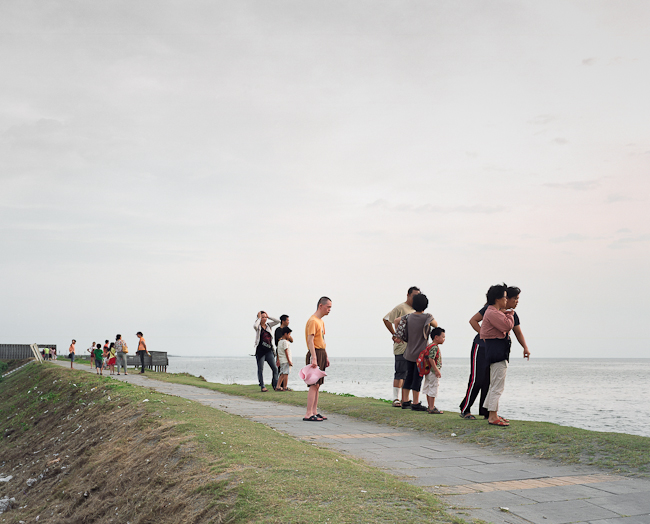

You seem to be the one wears many hats. You are a photographer, a performer. Can you tell us more about your background and how you become interested in photography?
I studied Advertising and Public Relations as my undergrad in Taiwan. It was required to take photography classes but I never really focused on that. I was trying to be a businessman. The first month I got paid from my marketing job, I went right away to get a small film camera. Since then I started to take photographs even when I was at work or went out for a lunch break. At the same time, I am a performer. I have been singing in a choir and some opera gig for 10 years. I also took event photos for the choir.
The first time that I began to make photos as “artwork” was when I quit my job and decided to study fine art. I made my portfolio and applied for schools in the U.S. and I got accepted by Pratt Institute. I found photography special when I started digging into it. When taking photos, I feel like I can capture the moment and the memory. This is the most reason I am fascinated by photography.
How do you start the series Nowhere in Taiwan? Is it before or after you went to the United States?
That was back in the summer of 2011. I had been in the U.S. for a year, and I went back to Taiwan to visit. When I was back, I became more opinionated and aggressive compared with all my fellows in Taiwan. In Taiwan, everyone is trying to fit into the group, and I felt I was totally a weirdo, or an outsider. I had a clearer way of looking at things being an outsider. It was good but painful. I was also getting in some fights with my parents because I was more opinionated in a way. I sensed a strange atmosphere around me. I felt weird and I started to criticize a lot of things around me.
At that time I had some projects in my mind. Originally, I wanted to make portraits of motorcyclists in Taiwan, because the motorcycle is a spectacle that reflects unique culture of Taiwan. But instead, those confusions led me to go on the road, to take a look at my country. I followed my intuition. I did not even know that it would be a project in the end. The only thing I knew for sure was that I will take a lot of photos. I brought my Mamiya 7, which is for me, a medium format snapshot camera, and drove around taking photos. That is how it happened.
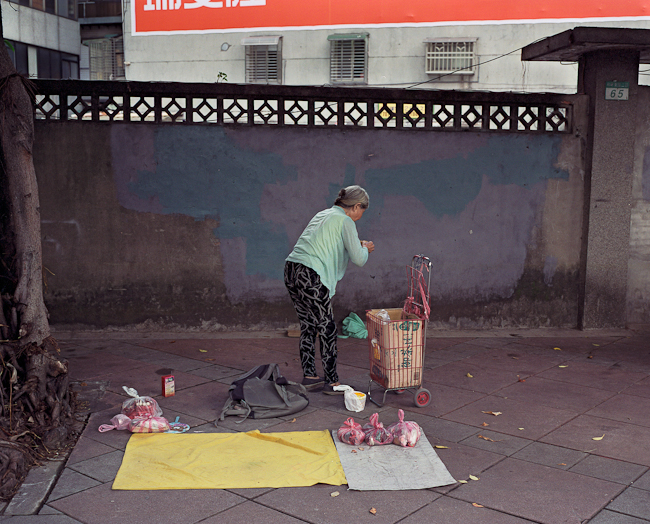
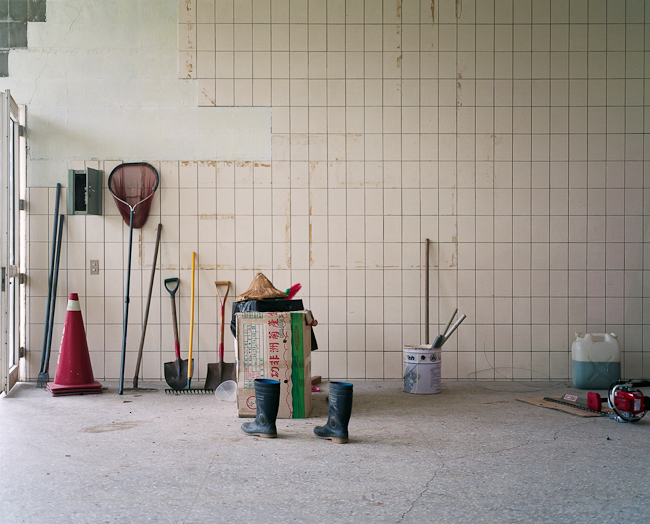

It seems it is hard to define this series. It is neither documentary nor landscape or cityscape.
When taking photos, I didn’t even think about it, but when I did the editing, I found that I was trying to remove almost all the contexts from the scenes. I subconsciously and intentionally avoided to document any literal facts. For instance, I would not show train station’s name, billboards or any sights of interest in my photos. I like the photographs to be questions rather than answers. I try to capture the anonymous everywhereness. When I remove the context from the photograph, you will find it looks familiar. That is how it became universal and more abstract in a way.
In a classic narrative, or a story, often there are elements like character, time, place, plot, conflict, and also the beginning, middle and the end. I would prefer one or two elements missing, so that it more easily goes to the poetic realm. I always like viewers to ask questions such as what was that? where was this? where was he going? how did that happen? why were you there? etc. Meanwhile, all the scenes seem to be in the middle of something. They are not in the end nor at the beginning. I would like to make the image that is not about the fact itself but more about something else around the fact.
I feel this is more an eastern way of expressing. In the west, people are very specific about what they are presenting, while the eastern way is more ambiguous.
I agree with what you said but I am not sure. I recently saw a documentary about Gregory Crewdson. He actually talked about the same thing. He is trying to find a familiar place – an anonymous place that looks like everywhere. But at the same time, he is really precise. So I think there are different layers in eastern and western thought. I believe that western photographers such as Stephen Shore, Alec Soth, or even like Joel Sternfeld, make photographs that are not purely narrative. For instance, Alec Soth argues that photography is not the best medium to tell a story. What photography can do best might be to suggest a story or, like what I said, to conduct a poem.
For me, eastern way of expressing is even more poetic. There is no narrative. There is a thing there out of nowhere but is everywhere. I think I am leaning towards the western poetic sense but adding a little bit more eastern way of expressing as my root. When I was taking photographs on the road trip, I kept thinking of Alec Soth and Rinko Kawauchi. For me, they shared some similar quality but at the same time they are different. Alec Soth still tries to suggest a story, a vague story, while Rinko Kawauchi is presenting feelings about life and death, which are not stories but larger than stories. I am not really sure if that is western expression compare with the eastern one. I can only say that those two were my heroes when I was taking photographs on the road trip. I guess my work is at the intersection between them.


You are in between the eastern and western way of expressing, and you are also looking for “scenes and situations that seem to be ‘in between,’ neither landscape nor cityscape.” Why?
At first, I was just trying to find places that do not look like a typical travel photo. I find that when the cities are getting urbanized, they look similar to each other. You can see Taipei is like 80 or 60% of New York; Downtown Brooklyn is maybe 70% of Union Square. I try to avoid taking photos of urban scenes because they look pretty much the same. Also, when the city is getting urbanized, it is shaped by a bigger force. If I photograph it, I am photographing the force – the human culturation and civilization, or even the capitalization or globalization – behind it. At the same time, I try to avoid beautiful landscapes, because they all look identical to me. Pure nature is simply not what I am looking for. I am more interested in the human traces existed in places that are partially urbanized or are already abandoned, so that I can see the humanity more clearly. They are like the prototype of humanity for me.
In your statement you wrote “I look for unexpected instances of intimacy,” but you seem to be distant and detached from the subject, how do you understand “intimacy?”
I think there are different kinds of intimacy. For example, you have a photo with a girl and you stay very close to each other. This is very literal and in-your-face kind of intimacy. In this series, I am using love and hate eyes to look at my country. In fact I don’t hate it. I just want to know more about it. But at the same time, I have a hard time to fit back in. I feel that my eyes are caressing each place and all my sensibility are encompassed to really embrace everything in the frame, trying to figure out the answer. For me, this is intimate.
The distance does not matter. This is maybe something eastern too. You might have the experience that when you are in junior high school, say, you have a crush on a guy. You observe him from afar with loving eyes but are too afraid to get closer. That is my kind of intimacy. Some people might think that I stand too far away and they like to see something closer and more intimate, but I disagree. In the movies directed by Hou Hsiao-Hsien, there are several scenes, where the man doesn’t even say a word but you feel that he wants to say it but he can’t. It is kind of the Asian guy’s way to express without expressing. I do not have to talk loud and stay closer to be intimate.

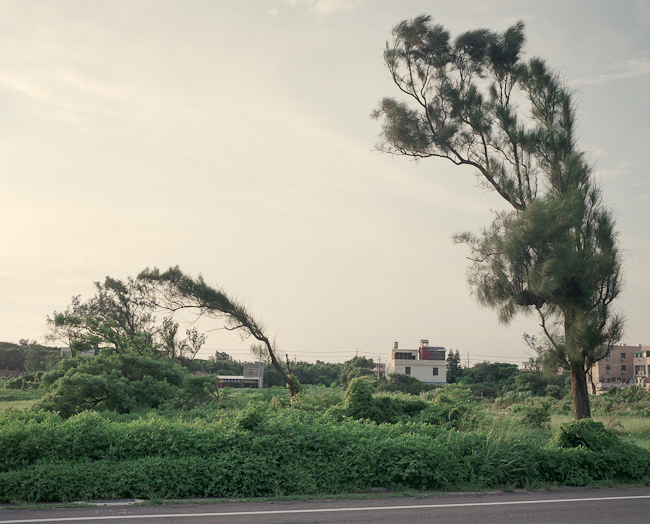
I feel you are searching for your identity on your road trip. After the trip, do you think you found the answer or you are still questioning?
I will say, on the way to finding the answers I became the answers. For instance, I want to go to the top of the mountain, but on the way to the top I gain a lot of things. I no longer need the answer. I said that I felt people were looking at me in a strange way when I went back Taiwan in 2011. After the trip, no one looks at me. I totally blend in. I don’t know why, or maybe I simply became less self conscious. That is also part of what happened inside me. After the road trip, I no longer needed to find any solution or answer because I already felt accepted. That’s how I sequence my works in my book as well – from confusion to acceptance.
You made a really beautiful book for this project. Can you tell us how you came up with the design and also how do you sequence and edit your work?
I always try to think about different ways of presenting my work. An online slideshow would have a cinematic flavor because of its single-screen and time-based quality – one image after another. A gallery show would be a three dimensional showcase. People can walk around to see the whole layout more freely, not necessarily in sequence. For me, a book is the combination of the two: I can make the layout within the sequential nature of a book’ structure, like creating Mise-en-scène in a book form.
For the series Nowhere in Taiwan, I leave a lot of empty space around each image. I’ve tried different layout like leaving small borders, double page spread, or full bleed. None of them work for me. It might have something to do with the way of my composition – there is no major subject matter in each image. You always need to look through the whole frame to figure out what is happening there. Also because of the emotion of the project – alienated, melancholy, and nostalgic, which is like feeling homesick at home, I feel each image needs a lot of space to stay “lonely.”
I would also like to create a rhythm, not in a narrative way, but in the sense of musicality. I tried to find some music that would fit the feeling of this series. I think Ryuichi Sakamoto’s OST for Tony Takitani is a real fit. In the main theme, there’s no clear melody, but some single notes sustaining irregularly in a bizarre way – a mysterious rubato, creating tension within a suspended space. I kept listening to the music while editing. As a result, there are not many diptychs in the book. It is usually one image on the spread, left or right. I also have a lot of images back to back between pages, which would be diptychs in an ambiguous way. I learned a lot from Robbin Ami Silverberg, a great artist and book maker teaching at Pratt. She taught me how to make books.
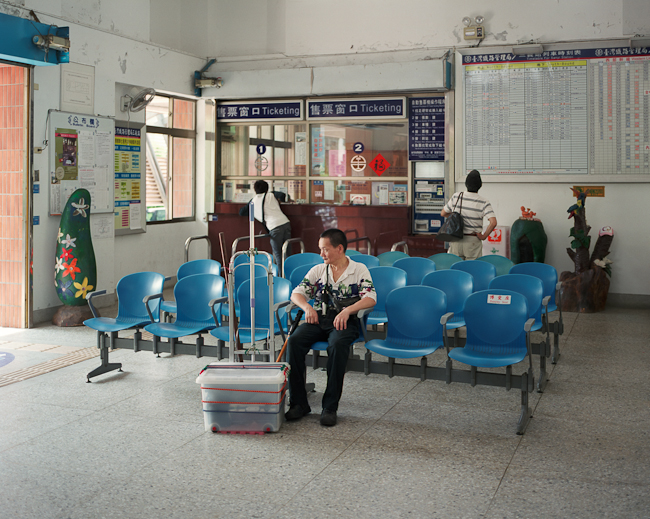


You are pretty successful at promoting your works and your work is in permanent collection of Museum of Fine Arts, Houston. Tell us how you made it.
I was lucky. I attended the FotoFest Portfolio Review in 2012 and met the curator of Museum of Fine Art, Houston. She liked my work and introduced me to meet one collector. After I got back from the portfolio review, the curator emailed me to confirm that the collector was willing to fund the museum to purchase one print form me. You’ll never know how things gonna happen.
Do you make money selling your fine art work?
Yeah, but that is not even covering one or two month rent. It is really hard for an emerging artist to solely live on their works. There is no such market. The money of the whole market goes to the 1% of the established artists who are on the top. When they are established, they have more and more opportunities. Once an artist gets into MoMA, exhibition opportunities and collectors just go to them.
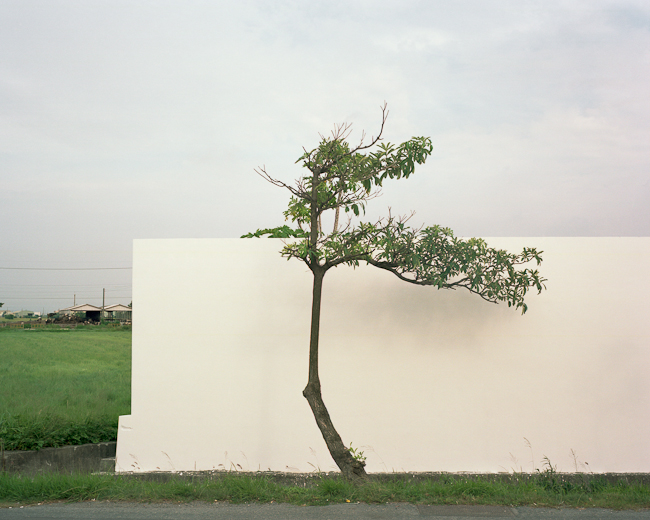

How do you support yourself? And how do you balance between making art, self promotion and making money?
I make money by freelancing. I take event photos, wedding photos and I do videos too. 20 or 30% of my time goes to make money, and I spend maybe 30% to application and promotion. I quit my marketing job to be an artist, but end up promoting myself by using my marketing skills. What if an artist makes wonderful work but does not need to promote himself at all? How would people recognize him? Anyways, I should spend more time in my studio. It’s so hard to make the balance.
What’s your next step?
I am going back for an award ceremony in Taiwan and also make some work. I have six memory boxes in Taiwan with the things that are important in my memory but there is no way I can use them. I want to take photos of those objects, make 5×7” prints and put them in a small box as an artist book or like a box of memories. The working title would be “Things I am Throwing Away from My Memory.” In this way, I can actually throw them away but keep them conceptually, which is totally contradictory to the title.
I have probably 30-40 ideas or more of what I want to do. It is hard for me to decide which one to start. It has to be intuitive and something that I feel I really want to do, need to do in a particular way. If I do not have this kind of impulsive feeling, then I am just trying to be creative. For me, that is not making art. Making art is not trying to be impressive, to be creative or to do something different. When your work is truly personal and true to yourself, it suddenly become universal. This is my ideal way of making art.

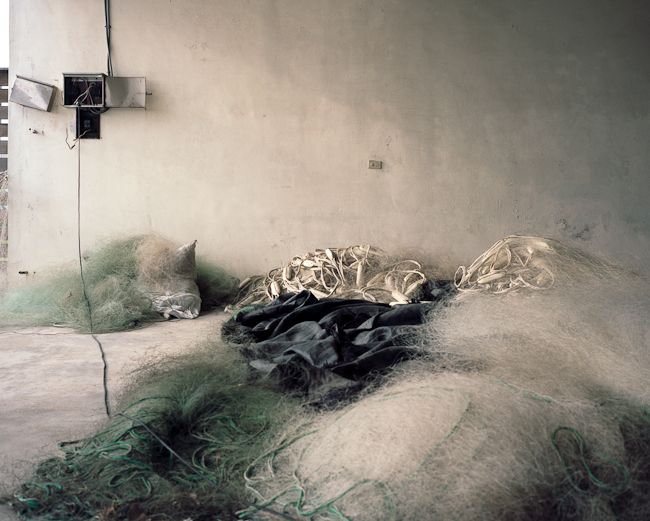
To view more of his work, please visit his website.